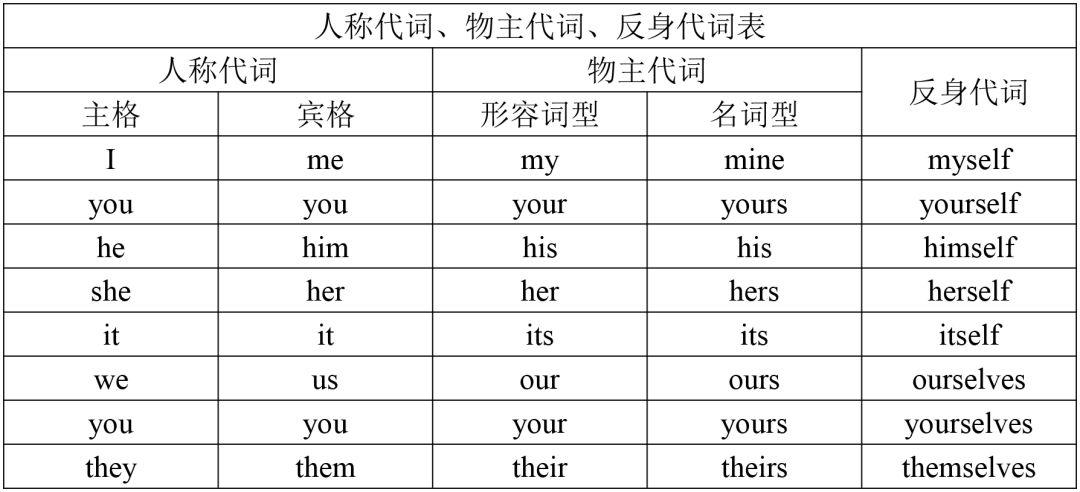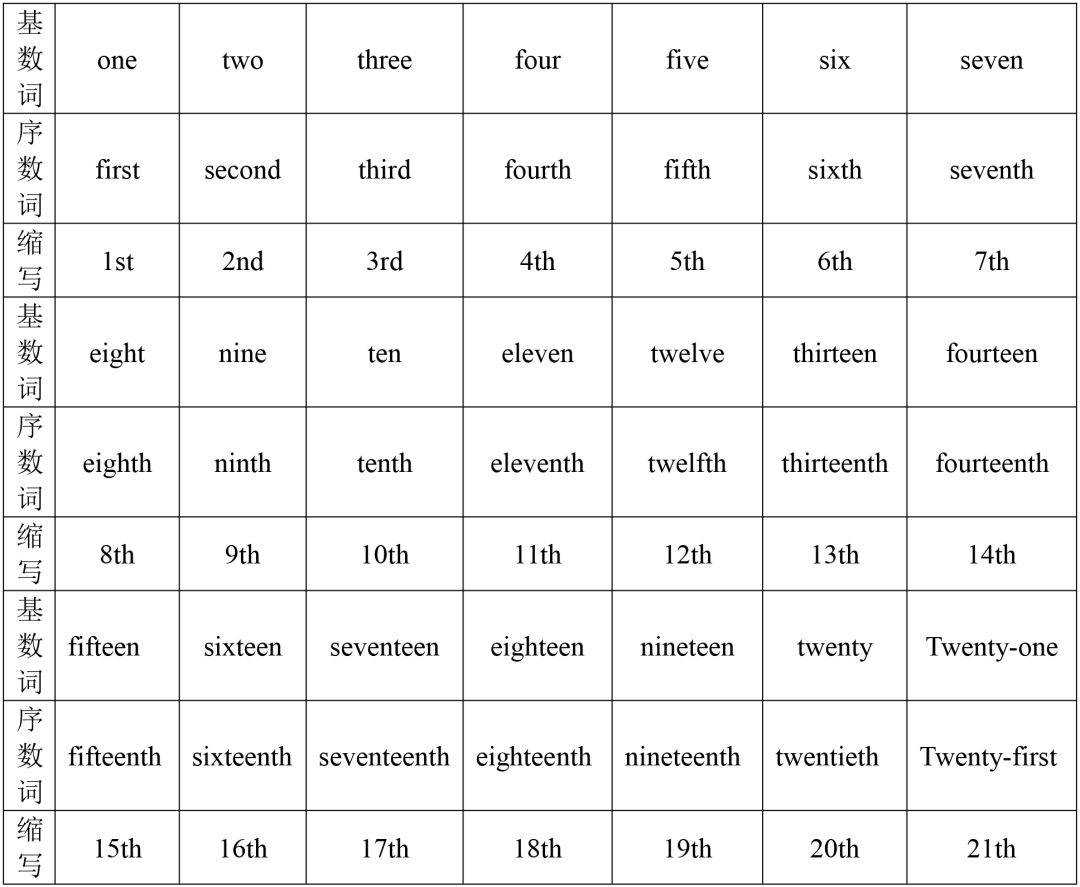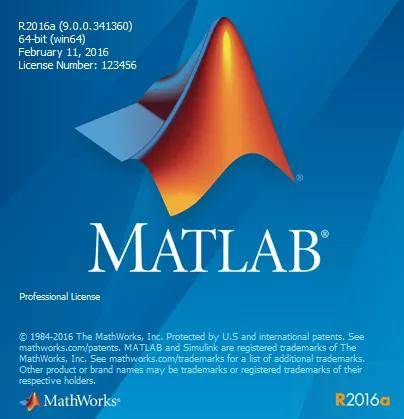今天豆姐给大家整理了七年级上册个单元的重点单词、句型以及语法,初一的同学赶紧收藏吧!
Starter Unit 1 Good morning!
重点单词:
Good,morning,hi,hello,afternoon,evening,how,are,you,I,am,fine,thanks,Ok,thank
重点句型和语法:
一、见面问候语
1. -Good morning! -Good morning!
-Good afternoon! -Good afternoon!
-Good evening! -Good evening!
-Good night! -Good night!
2. -How are you ? 好友重逢
-I’m fine, thanks. / Fine, thank you. /I’m OK, thank you very much. And you?
-I’m fine, too. Thanks.
3. -How do you do? 初次见面
- How do you do?
4. -Hello/Hi!
-Hello/Hi! Hello较正式但一般不对长辈说
二、Be动词的用法
Be动词的一般现在时有三种:
I与第一人称(I)连用;is与第三人称(他he,她she,它it)和其他单数名词连用;are与人称复数(第一人称we,第二人称you,第三人称they)和复数名词连用。
即:我(I)用am, 你(you)用are, is跟着他(he)她(she)它(it);
单数名词用is
复数名词全用are
三、大写字母的用法:
1.句子开头要大写(首字母)How are you?
2.文章标题要大写(虚词除外);Good morning!
3.节日、月份、星期几(专有名词);New Year’s Day, May, Monday
4.报纸、杂志和书籍;China Daily, Jane
5.职业、头衔和称谓;Doctor Wang, President Wen, Uncle Wang
6.I 和OK要大写;
7.缩略词语要大写。MBA, CCTV
Starter Unit 2 What’s this in English?
重点单词和短语
What,is,this,in,English,map,cup,ruler,pen,orange,jacket,key,quilt,it,a,that,spell,please,in English,an orange,a key,a ruler,a map,a quilt.
重点句型和语法
一、what引导的特殊疑问句
-What’s this in English?
-It’s a map/ruler/pen/jacket/key/quilt/原由网an orange.
-How do you spell it? /Spell it, please. Can you spell it?
-M-A-P/……
What colour is it?/ What’s your name?……
二、不定冠词a/an的用法:
1.表示数量“一”(微弱的);a book
2.不具体说的某人或某物;a Mr Wang
3.泛指某一类人或物;a cat
4.某一类人或物中的任何一个;There is an elephant in the zoo.
5.首次提到的人或物;This is a ky.
6.用于抽象名词前,使抽象名词具体化;It’s a pleasure to talk with you.
7.某些固定搭配中:have a look, take a walk, have a good time.
a用于以辅音因素开头的单数可数名词之前,an用于以元音因素开头的单数可数名词之前。
三、this,that指示代词的用法
This: “这个,这”指近处或距离说话人较近的人或物。
That: “哪个,那”指远处或距离说话人较远的人或物。
Starter Unit 3 What colour is it?
重点单词
Colour, red, yellow, green, blue, black, white, purple, brown, the, now, see, can, say, my, what colour
重点句型和语法
一、重点句型:
1.-Good morning!
-Good morning!
-What’s this in English?/What’s this? /What’s that?
-It’s a map/ruler/pen/jacket/key/quilt/an orange.
-How do you spell it? /Spell it, please. Can you spell it?
-M-A-P/……
-What colour is it?
-It’s red/blue/yellow……
2.-What colour are the rooms?
-They are……
3.The ruler is blue.
二、定冠词the的用法:
The表示特指的人、物或群体, 作用相当于this, that, these, those.特指说话双方都知道的人、物或上文已提到的人、物。
1.表示某个(些)特定的人或事物;Give me the book.
2.特指说话双方都知道的人或事物;Where is the book?
3.指上文提到过的人或事物;This is a pen, the pen is black.
4.用在世界上独一无二的事物前;the sun, the earth, the moon, the world
5.和某些形容词连用,表示一类人;the old, the young, the wound
6.在方位名词前;in the east/west/north/south
7.西洋乐器前;play the piano/violin/guitar……
8.由普通名词组成的专有名词前;the Great Wall, the Summer Palace
9.某些固定搭配:in the morning/afternoon/evening
Unit 1 My name’s Gina
重点单词或短语
Name,nice,to,meet,too,your,Mrs.,his,and,her,yes,she,he,no,not,zero,one,two,three,four,five,six,seven,eight,nine,telephone,number,phone,friend,China,last,middle,school,first,telephone/phone number,last name,family name,given name, first name,middle school,in China
重点句//www.58yuanyou.com型或语法
一、重点句型
1.-Hi, my n//www.58yuanyou.comame is Gina.
-I’m Jenny.
-Nice to meet you.
-Nice to meet you, too.
2.-Hello! What’s your name?
-My name is……/I’m……
3.-What’s his/her/name? (last name, family name, first name, given name)
-His/Her (last name, family name, first name, given name)name is……
/He/She is ……
4.-Are you Gina?
-Yes, I am./ No, I’m not.
5.-Is he/she ……
-Yes, he/she is. / No, he/she isn’t.
6.-What’s your/her/his telephone number?
/What number is your/her/his telephone?
-It’s 585-0886/……
二、it的用法
it是代词,“它”,是第三人称的单数形式。
1.指代前面已提到的事物;What’s this? It’s a dog.
2.指代陌生或不熟悉的人;Who is behind the door? It may be Jim.
3.表示时间、距离、天气等;What time is it? It’s funny.
三、数词的用法
基数词: 表示“多少”的数词。
One,two,three,four,five,six,seven,eight,nine
序数词: 表示“第几”的数词。first
1.表示数字、年龄、日期;
How old are you? I’m ten. What’s the date today? It’s October 3. What’s four and one?
2.表示编号;class one, unit one,lesson one
3.表示号码,如电话号码、门牌号、身份证;
4.表示时刻;8:00
四、形容词性物主代词
物主代词是表示所有关系的代词,是人称代词的属格形式。分为形容词性物主代词和名词性物主代词。有人称和数的变化。本单元主讲形容词性物主代词。

Unit 2 This is my sister
重点单词
Sister,mother,father,parent,brother,grandfather,grandmother,grandparent,family,those,who,these,hey,well,have,day,bye,son,cousin,grandpa,mom,aunt,grandma,uncle,dad,here,daughter,photo,of,next,picture,girl,dog
重点句型
1.-This/That is my sister/brother/father/mother/son/…… 单数
-These/those are my sisters/brothers/…… 复数
2.-Who is he/she ? 单数
-He/She is my mom/my dad/my brother/my sister/my grandma/grandpa……
3.-Who are these/those? 复数
-They are my my sisters/brothers/……
4.-Is he/she your sister? 单数
-Yes,he/she is. /No, he/she isn’t.
5.-Are these/those your sisters? 复数
-Yes, they are. / No, they aren’t.
6.Tom: Jhon, this is my sister, Mike. Mike, this is my friend.
Jhon: Nice to meet you!
Mike: Nice to meet you, too.
语法
一、指示代词:this, that, these, those
单数:this: “这个,这”指近处或距离说话人较近的人或物。
that: “那个,那”指远处或距离说话人较远的人或物。
复数:these: “这些”指近处或距离说话人较近的人或物。
those: “那些”指远处或距离说话人较远的人或物。
二、将单数形式的句子变为复数形式的句子
1.指示代词的变化:this→these, that→those
2.人称代词的变化:I→we; you不变;he/she/it→they
3.be动词的变化:am/is→are
4.可数名词的变化:
单数变复数的规则变化
(1)一般情况下在词尾加-s;
(2)以s, x, sh, ch结尾的加-es;
(3)以o结尾的加-s或-es;
-s: photos/radios/pianos/zoos/bamboos/kilos
-es: tomatoes/potatoes/……
(4)以f或fe结尾的变f/fe→v+es, (屋顶roofs,信念beliefs,首领chiefs除外。)
knife→knives shelf→shelves
(5)以“辅音字母+y”结尾的变y→i+es
不规则变化:
(1)单复数同形:sheep绵羊,deer鹿,means手段
(2)变元音:man→men, foot→feet, tooth→teeth
(3)变词尾:child→children, ox→oxen, mouse→mice
(4)只有复数的名词:congratulations, clothes, glasses, surroundings, goods, shorts, thanks, trousers, wishes
(5)单复数意思不一致:glass玻璃,glasses眼镜;water水,waters水域;people人民,peoples民族;force力量,forces部队;arm胳膊,arms武器;……
三、人称代词的用法:he,she,it,I,they,we,you
1 与be动词的搭配:I→am, he/she/it→is, you/we/they→are
2 独立作主语时习惯用宾格:me,you,him,her,it,us,you,them
-I like bananas.-Me too.
3 并列作主语的顺序:
单数:你you,她she/他he,我I 二三一
复数:我们we,你们you,他们they 一二三
Unit 3 Is this your pencil?
重点单词
Pencil,book,eraser,box,schoolbag,dictionary,his,mine,hers, excuse,me,thank,teacher,about,yours,for,help,welcome,baseball,watch,computer,game,card,notebook,ring,bag,in,library,ask,find,some,classroom,e-mail,at,call,lost,must,set
重点句型
1.-Is this/that your book?
-Yes, it is. It’s mine. -Thank you for your help. -You’re welcome.
-No, it isn’t. It’s his/hers.
2.-Is this/that his/her book?
-Yes, it is. It’s his/hers
-No, it isn’t. It’s mine.
3.-Are these/those your books?
-Yes, they are. They are mine.
-No, they aren’t. They are his/hers.
4.-Are these/those your pencils?
-No, they are Bob’s/Mary’s.
5.-What about this dictionary?
What about=how about “如何,好吗,怎么样”,用于征求对方意见。
What about/how about a cup of tea? 喝杯茶怎么样?
6.call sb at+电话号码;sb must do sth; thank sb for sth
语法
1.将含有be动词的陈述句转换为一般疑问句
将be动词(am,is are)提到句首并大写首字母,句末用问号,第一、二人称互换,some,any互换。
2.含有be动词的一般疑问句的肯定回答和否定回答
肯定回答:Yes, 主语+be(am,is,are)
否定回答:No, 主语+be(am,is,are)not. 缩写:I’m not/he isn’t/they aren’t
3.名词性物主代词:Page 5
Unit 4 Where is my schoolbag?
重点单词
Where,table,bed,bookcase,sofa,chair,on under,come,desk, think,room,their,hat,yeah,know,radio,clock,tape,player,model,plane,tidy,but,our,everywhere,always,tape player,model plane,be tidy,in our rooms,have a clock,on her bed,on the sofa,under your bed,in your schoolbag,come on,on your head
重点句型
1.-Where is my schoolbag?
-It’s on the desk/under the bed/in the room.
2.-Where are my schoolbags?
-They are on the desk/under the bed/in the room.
3.-Is the ……in/on/under the……?
-Yes, it is. /No, it isn’t.
4.-Are the ……in/on/under the……?
-Yes, they are. /No, they aren’t.
语法
一、方位介词:on, in, under
通常回答where引导的特殊疑问句。
1.on“在……上面”,强调一物再另一物的表面上。On the wall, on the desk, on the floor, on the bed……
2.in“在……里”
(1)表方位:“在……里、中(上)”
In the tree “在树上” 表树上外来的事物
On the tree“在树上”表树上长出来的东西
(2)表示图片或报纸上的内容:in the picture, in the newspaper
(3)表时间:早中晚,年、月、年代、世纪
In the morning/afternoon/evening, in 2008, in 21 century, in 1990’s
(4)表地点:城市、乡村、国家
In Beijing, in Shanghai
(5)用某种语言:in English
(6)用原材料:in red
(7)表示穿着、戴着:the girl in blue is a student.
3.under“在……下”在某物的正下方。
二、人称代词作原由网主语时,将含有实义动词的陈述句变为一般疑问句及其肯定回答和否定回答,否定句。
1.当主语是人称代词的复数时,变疑问句在句首加Do,句末用问号,第一、二人称互换,some,any互换。变否定句在实义动词前加don’t, some, any互换。
疑问句的肯定回答:Yes, 主语+do.
疑问句的否定回答:No, 主语+don’t.
2.当主语是人称代词的单数时,变疑问句在句首加Does,句末用问号,第一、二人称互换,some,any互换。变否定句在实义动词前加doesn’t, some, any互换。
疑问句的肯定回答:Yes,主语+does.
疑问句的否定回答:No,主语+doesn’t.
Unit 5 Do you have a soccer ball?
重点单词
Do,have,tennis,ball,bat,soccer,volleyball,basketball,hey,let,us,go,we,late,get,great,play,sound,interesting,boring,fun,difficult,relaxing,watch,same,love,with,sport,them,only,like,easy,after,class,classmate,soccer ball,ping-pong bat,play volleyball,play sports
重点句型
1.-Do you/they have a soccer?
-Yes, I/they do. /No, I/they do.
2.-Does he/she have a soccer?
-Yes, he/she does. /No, he/she doesn’t.
3. I/they don’t have a soccer.
4. He/She doesn’t have a soccer. He/She has a soccer.
语法
一、人称代词的宾格:Page 5
二、一般现在时态中have的用法
1.have的主语是名词复数、第一二人称单复数和第三人称复数;has是第三人称的单数形式,主语是不可数名词、可数名词的单数、第三人称的单数。
2.have/has作谓语时的句型转换
(1)否定句式:主语+don’t/doesn’t +have
(2)一般疑问句式:Do/Does +主语+have……?
肯定回答:Yes, 主语+do/does
否定回答:No, 主语+don’t/doesn’t.
(3)have之后的名词有some修饰时,变疑问句和否定句时改为any.
(4)have/has当“有”讲时与there be的区别
Have/has: 与主语是所属关系,强调某人“拥有、占有”某物;
There be: “客观存在”,强调客观存在的事实,是there引起的倒装句。
(5)have的其他含义:“吃、喝”或其他
Have breakfast, have a look, have a part
Unit 6 Do you like bananas?
重点单词
Bananas,hamburger,tomato,icecream,salad,strawberry,pear,milk,bread,birthday,dinner,week,food,sure,burger,vegetable,fruit,right,apple,then,egg,carrot,rice,chicken,so,breakfast,lunch,star,eat,well,habit,health,really,question,want,be fat, think about,how about,sports star,volleyball star,eating habits,for breakfast,for dinner,after dinner.
重点句型
1.-Do you/they like bananas?
-Yes, I/they do. /No, I/they do.
2.-Does he/she like bananas?
-Yes, he/she does. /No, he/she doesn’t.
3.-He/She likes……
He/She doesn’t like……
4.-What do you/they like for……?
-I like……for……
5.He/She likes……,but he/she doesn’t like……
语法
一、like的用法
1.like sb/sth“喜欢某人、某物” I like bananas.
2.like to do sth“喜欢做某事”
3.like doing sth“喜欢做某事”
二、well与good
1.well adj 位于联系动词之后,表达“健康的”。I’m very well.
adv 修饰动词。We play football well.
2.good:adj, 作名词的前置定语,连系动词的表语。She is a good girl.
三、it的用法
I think it’s healthy.
1.人称代词,指代上文中已提到或刚刚提到的单数事物,以避免重复。
2.用于指代时间、天气、日期、距离、价值、温度等。
3.用作形式主语,代替动词不定式位于句首,而真正的主语是动词不定式,避免句子头重脚轻。It’s easy for me to play basketball.
四、与三餐有关的短语
At breakfast/lunch/dinner/supper 在吃早、午、晚餐
Have breakfast/lunch/dinner/supper吃早、午、晚餐
Have sth for breakfast/lunch/dinner/supper 早、午、晚餐吃某物
五、可数名词与不可数名词
1.可数名词:可以计数的名词
(1)分类 单数可数名词:单个人或事物
复数可数名词:两个或多个人或事物
(2)名词复数的规则变化
①一般在词尾加-s。Books, pens
②以s,x,sh,ch结尾的在词尾加-es。Classes, watches
③以“辅音字母+y”结尾的,变y→i+es。families.
④以f,fe结尾的变f,fe→v+es。Knives, wives
屋顶roofs,信念beliefs,首领chiefs除外。
⑤以o结尾的加-s或-es;
-s: photos/radios/pianos/zoos/bamboos/kilos
-es: tomatoes/potatoes/……
(3)不规则变化:
①单复数同形:sheep绵羊,deer鹿,means手段
②变元音:man→men, foot→feet, tooth→teeth
③变词尾:child→children, ox→oxen, mouse→mice
④只有复数的名词:congratulations, clothes, glasses, surroundings, goods, shorts, thanks, trousers, wishes
⑤单复数意思不一致:glass玻璃,glasses眼镜;water水,waters水域;people人民,peoples民族;force力量,forces部队;arm胳膊,arms武器;……
即有些词既可以作可数名词也可以做不可数名词,但意思不一致。
2.不可数名词
不能直接用数词来表示数量,如物质名词、抽象名词。没有复数形式。如果要表示数量必须借助其他词。如,“计量单位+of”。
用法:
(1)没有复数形式
(2)作主语时谓语动词用单数
(3)其前不用不定冠词a/an
(4)其前不用基数词
(5)表数量用“计量单位词+of”。
(6)可用some, any, much来修饰。
Would you like some bread?
Unit 7 How much are these socks?
重点单词
Much,sock,Tshirt,sweater,trousers,shoe,skirt,dollar,big,small,short,long,woman,need,look,pair,take,ten,Mr.,clothes,store,buy,sale,sell,all.Very,price,boy,buy sb sth=buy sth for sb
重点句型
1.-How much is this T-shirt?
-It’s……dollars/yuan
-I will take it
-Here you are.
-Thank you.
-You’re welcome.
2.How much are……?
-They’re……dollars/yuan
-I will take them
-Here you are.
-Thank you.
-You’re welcome.
3.-Can I help you?
-Yes, please. I need……
-What colour do you want?
-Blue.
4.-Come and buy your clothes at…….We sell……at very good price. We have……for……. Come to……now.
语法
一、how much与how many的区别
1.how much
(1)提问物品的价格:“多少钱”=what’s the price of……
(2)提问不可数名词的数量。How much milk do you drink everyday?
2.how many
提问可数名词的数量:“多少”。How many apples do you have everyday?
二、Can I help you?的用法
是服务员招呼顾客的常用语。=May I help you?=What can I do for you?=Is there anything I can do for you?
肯定回答:Thank you, I want……/Yes, please. I’d like……
否定回答:No, thanks. I’m just looking around./ Just have a look.
can’t help doing sth情不自禁做……
三、one与it的区别
两者均可作代词, 代替上文出现过的名词。
1.one: 指代“同名异物”,即指代与前面事物同属一类的事物。同类事物中的“一个”用one, “一些”用ones。
2.it 指代“同名同物”,即上文出现过的同一事物。
四、here you are句型在不同情景的含义
1.“给你”:向别人借东西或购物时
2.“终于找到了”:寻物时,自己发现时。
3.“你到站了”:乘车到站时,司机或售票员会说。
五、基数词
基数词,表示数目或数量的多少。
1.基数词的表达
(1)one到twelve逐一记忆。
One, two, three, four, five, six, seven, eight, nine, ten, eleven, twelve
(2)thirteen到nineteen,在个尾数后加后缀-teen, thirteen, fifteen, eighteen除外。
(3)Twenty到ninety表示“几十”,在个尾数后加后缀-ty。Twenty, thirty, forty, fifty,eighty除外。
(4)21~29至91~99,表示“几十几”,在“整十-个位数”。Twenty-one
(5)One hundred/a hundred“一百”,200~900用“具体数字+hundred”
2.基数词的用法
(1)表示年龄,基数词+years old
(2)表述数量,位于名词之前。Three books
(3)表示顺序、编号。Class one
(4)用来计算。Two and three is five.
Unit 8 When is your birthday?
重点单词
When,month,January,February,March,April,May,June,July,August,September,October,November,December,happy,old,part,first,second,third,fifth,eighth,ninth,twelfth,twentieth,test,trip,art,festival,dear,student,thing,term,busy,time,there,happy birthday,how old,English test,school trip,Sports Day,art festival,Children’s Day,Women’s Day,in January, basketball game,see you,have a good time,have a birthday part
重点句型
1.-When is your birthday?
-My birthday is on June 5th/1st/2nd/3rd.
或It’s on June 5th/1st/2nd/3rd.
2.-When is his/her birthday?
-His/Her birthday is on June 5th/1st/2nd/3rd.
或It’s on June 5th/1st/2nd/3rd.
3.-When is Amy’s/father’s/Mike’s birthday?
-Amy’s/father’s/Mike’s birthday is on June 5th/1st/2nd/3rd.
或It’s on June 5th/1st/2nd/3rd.
4.-When is Children’s Day/National Day/Women’s Day/New Year’s Day/Spring Festival/Tree Planting Day/Teachers’ Day/Army Day/May Day/Mid-Autumn Day/Dragon-Boat Day/Lantern Day?
-It’s on 1st June/1st October/8th March/1st January/……
语法
一、when疑问副词,“什么时候”,对年、月、日以及时刻进行提问或询问某一动作发生的时间。
When are you at home? When do you go to school on Monday.
二、十二月份及其缩写
一月January, Jan.; 二月February, Feb.; 三月March, Mar.; 四月April, Apr.
五月May, May; 六月June, Jun.; 七月July, Jul.; 八月August, Aug.;
九月September, Sept.; 十月October, Oct.; 十一月November, Nov.;
十二月December, Dec.。
三、时间介词:in on at
1. in+一段时间 in 1999
2. on+具体的某一天 on 2nd May
3. at+时刻 at 7 o’clock
四、英语中日期的表达方法
1. 美式英语日期表达法:月 日,年。日可以写成序数词或阿拉伯数字。June 5th,1995或June 5,1995。
2. 英式英语日期表达法:日 月,年。1/1st February, 1995。“读”时“日”一定要读作序数词,并在前面加定冠词the。The first Febru原由网ary, nineteen ninety-five.
五、day和date的区别
1. date“日期”,常指“几月几日”,表达方法:“月 日,年”
What’s the date today? It’s November 15th, 2013.
2. day “天”,指24小时,一整天。What day is it today?
“特定的重大的日子、节日”Today is 1st May.
“白昼”,与night相对。Day and night
六、名词所有格
表示人或物的所有及其所属关系。
1.’s所有格、of所有格、双重所有格
2.‘s所有格的构成
多用于有生命的名词或表示时间、国家、城镇、机构的名词
(1)单数名词在词尾+’s
(2)复数名词:以-s或-es结尾的在词尾+“’”
(3)复数名词:不以-s结尾的在词尾+’s
3.Of所有格的构成:“名词+of+名词”,多用于无生命的名词。
A picture of China
4.双重所有格
Of所有格与’s所有格的结合
A friend of my father’s
5.名词所有格的用法
(1)表示有生命的人或高级动物的所属关系。It’s my sister’s schoolbag.
(2)表示国家、城市、时间等名词的所属关系。Where are today’s newspaper?
(3)表示无生命的名词所有格一般用of短语。The map of China.
(4)所有格后带有地点名词时,地点名词可省略。Let’s go to doctor’s.
七、序数词
表示事物的顺序的数词,其作用相当于名词或形容词。
1.序数词的构成及其缩写
速记歌诀:一二三特殊记,其它加th就可以;
八去t,九去e,-ve要用f替;
整十变化要注意,变y为ie再加th;
若是遇到“几十几”,只变个位就可以;
前有定冠词the别忘记。

2.序数词的用法
(1)the+序数词,表顺序。The first
(2)作名词的定语,但前有物主代词修饰的除外。The/Her fourth birthday.
(3)表示英语中的分数。分子用基数词,分母用序数词,若分子大于1,分母加-s。
Two-thirds two fifths
(4)a/an+序数词:表原有基础上的“又一、再一”
(5)the+序数词+名词:表示编号。=名词+基数词
The second unit=Unit 2
Unit 9 My favorite subject is science
重点单词
Favorite,subject,science,P.E.=physical education,music, math,Chinese,geography,history,why,because,Monday,Friday,Saturday,free,cool,onTuesday,Wednesday,Thursday,Sunday,A.M.,P.M.,useful,from,Mrs.,finish,lesson,hour,playgames,the next day,for sure,have math,from……to,be free=have time,have fun=have a good time=enjoy oneself, have fun doing sth,finish doing sth,for two hours
有关学科的名词:Chinese, math, English, physical, chemistry,
重点句型
1.-What’s your favorite subject?/What subject do you like best?/Which subject do you like? (What’s…… favourite……?)
-Music.
-Why do you like music?
-Because it’s interesting. Because和so,though和but在句中只能有其一。
2. -Who is your music teacher?
-Mrs. Green.
3.-When is the /your music class?
-It’s on……
语法
1.特殊疑问句:
特殊疑问句是对句中某一部分内容提出质疑的问句,是指以what, who, when, where, why, how等开始的问句,不能用yes,no回答。
2.倒装结构:疑问词+一般疑问句(语序)?
3.陈述语序:疑问词+谓语+宾语、状语?
(1)what,“什么”,用来询问姓名、物品、数学运算的结果或什么时间做什么事等。如what colour, what grade, what class
(2)who,“谁”,用来询问人。Who is your math teacher?
(3)why,“为什么”,询问原因,回答多用连词because引导的句子。Why do you like science?
以why开头的否定疑问句多表示建议或请求。Why don’t you have a try?
图片来源自摄图网,文章整理自网络,欢迎收藏及转发到朋友圈,如涉及版权问题,请及时联系删除



